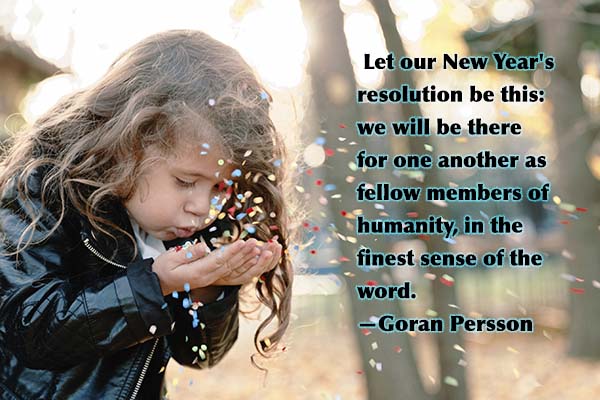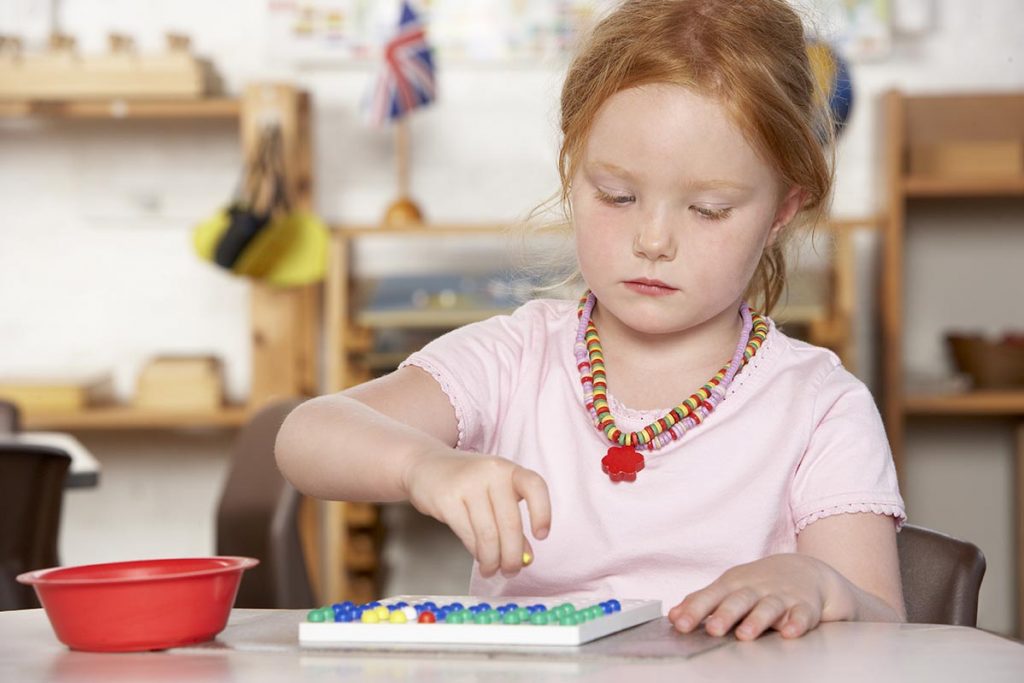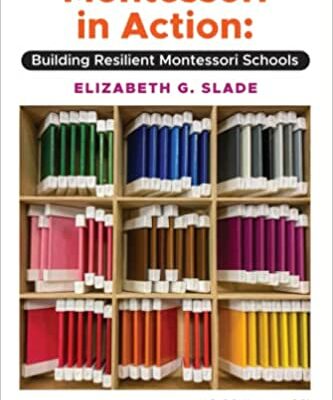I am so pleased to hear that your child is flourishing in her Montessori classroom. And it is wonderful to hear about h
erpeaceful persona.
Growing peaceful children is an important topic in the Montessori classroom and one crucial to the success of our classrooms. I agree that some children are calmer and more peaceful than others by their very nature. Some move with a greater care, make slower and more deliberate choices, and may even choose their words more carefully before they speak. Others tend to be more physically and mentally active. They run whenever there is an opportunity and love to physically interact with others. Some tend to speak without a filter and may choose words or behaviors that appear unkind to others. Others make impulsive choices. Many children are in the middle in some or all of these areas. These temperaments are often evident soon after a child is born.
In the Montessori classroom, we make every effort to help each child reach his maximum potential. We encourage children to make the most of their time and experiences in the classroom. We show them how to move and work mindfully; being aware of the space and needs of others. In our classrooms, many activities are happening simultaneously. Children need to be able to work near others without disturbing them in order for our method to be successful. Thus, this awareness of others is critical in our Montessori classrooms as each classroom works to become a community. As in all communities, the members work to help and support each other.
While this becomes natural in an adult community, young children do not come to the classroom with the skills to be supportive to others; therefore, they are modeled and taught by the older children in the community and by the adults that guide the child. The culture of a Montessori classroom is a place where people treat each other with respect, kindness, care, compassion, and let others do their work without bothering them.
So how, exactly, do guides in Montessori classrooms accomplish that goal?
It begins with the environment itself.A Montessori classroom is set up to resemble a children’s house or home. The objects in it are beautiful and carefully chosen. The design of the room allows for the children to move around freely, but the space is designed so that they need to move carefully to negotiate their way around the furniture. This discourages quick, uncultivated movement and encourages children to move with care and grace.
Children (and adults) tend to become like those that they are around. Children learn their behavior patterns from their parents, caregivers, and teachers. Adults who work in Montessori schools are conscious of their choice of words, speed of movement, and interactions with others. They tend to model the kind of behavior that they want the children to emulate. They make a point to create a culture of mindfulness, where the adult has a single task on which she is focused and completing.
There is also a culture of gratitude and appreciation of others. “Thank you, Miles, for showing Maria where we keep the cotton balls.” This not only lets Miles feel proud of his contribution to the classroom community, but it lets all the other children who heard that comment know that we value the help of others and that it is appropriate to say the words “thank-you” to express that gratitude.
Soon those expressions of gratitude are heard from children as well. Kind words are modeled throughout the classroom and the school. In a Montessori classroom, a child has ample time to do what he needs to do. He is seldom hurried and never rushed. So, his school climate is a calm place, where he is free to do the things he needs and chooses to do at a speed that is reasonable for him. Being honest, there are many days or parts of days that are not totally peaceful in any classroom. In this instance, the guide works to help the children find the solutions to their challenges, fix their problems, and restore the peaceful nature of the classroom. This peaceful nature becomes the norm rather than the exception.
We do try to help children understand the concept of peace even at a very early age. We read books about peace and peaceful situations. We sing songs about peace, and we create experiences during which a child feels peace. This might be sitting silently looking into the flame of a candle or watching the glitter slowly settle to the bottom of a wand. We show children how to practice making themselves totally still and silent in an effort to quiet the wiggles of our body and the chatter in our minds. This is the basis of meditation in some faith communities. We encourage children to use those techniques to restore themselves to a calm state when they are feeling upset. Most classrooms have a Peace Corner, where this work is done.
As in so many other areas, the 3-6 Montessori classroom plants a seed for the things that will come after the children leave this level. It is our belief that children, who have begun to value peacefulness, can calm their own bodies and minds, and are valued and contributing members of their classroom communities are ready to take on even bigger challenges when they leave our classrooms at age six.
Have a wonderful start to the school year! — Cathie
Tomorrow’s Child/Sept 2012/p28







